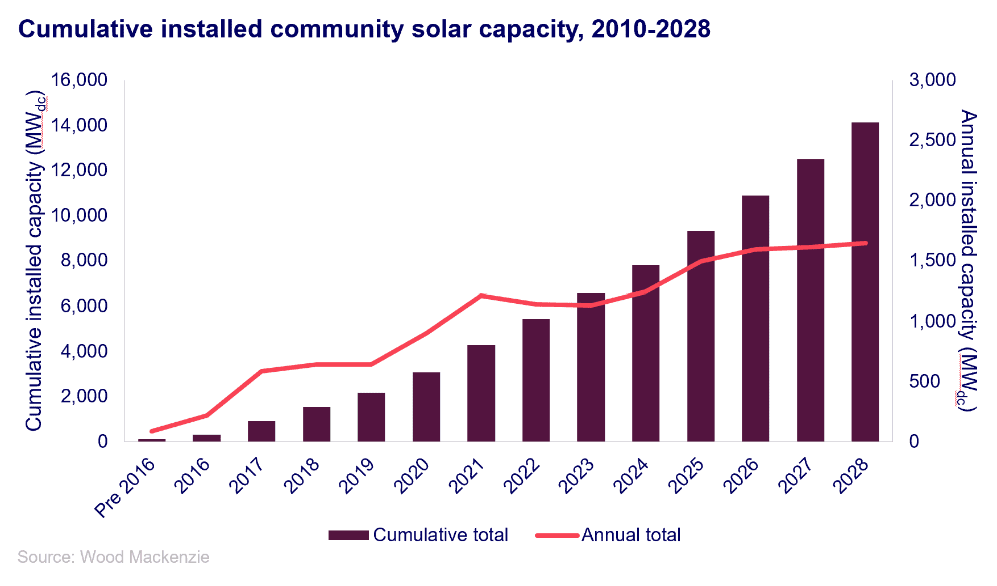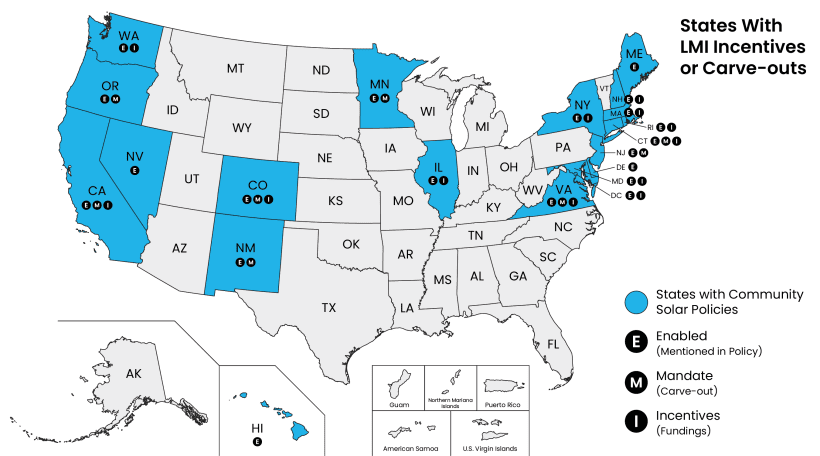
The cost to install solar has dropped by more than 40% over the last decade, leading the industry to expand into new markets and deploy thousands of systems nationwide. Solar installations grew 51% in 2023, ending the year with ~179 gigawatts of installed solar capacity throughout the U.S., enough power to support approximately 33 million households.
According to the Solar Energies Industry Association, solar industry growth has been driven by:
The Rise of Community Solar
By facilitating access for people who would traditionally be left behind by the residential rooftop solar industry (like renters and lower-income households), community solar fills the gaps to ensure everyone can participate in the clean energy transition. Many of the states with community solar programs have also carved out capacity specifically dedicated to low- and moderate-income (LMI) residents.
“The early years of community solar served almost exclusively commercial anchor customers; however, stricter LMI requirements in state programs and the availability of LMI-focused federal incentives are beginning to reveal a more well-rounded, community-focused subscriber profile,” said Caitlin Connelly, research analyst for Wood Mackenzie.
In the last decade, community solar has experienced an average annual growth rate of 80%, totaling 7.3 GW at the end of 2023. According to Wood Mackenzie, community solar is expected to reach 14 GW by 2028, growing by an annual average of 8% annually.

“Community solar’s growth continues on a healthy long-term trajectory with capacity projected to more than double over the next five years in existing state markets alone. These projections don’t factor in new states passing community solar laws and the billions of dollars of federal grants that we expect will go to states to expand access to community solar. Needless to say, we’re just scratching the surface on how many people in America can get the benefits of community solar access by the end of the decade if regulators and legislators keep their foot on the gas,” said Matt Hargarten, VP of Campaigns at Coalition for Community Solar Access.
 Source: National Community Solar Partnership+
Source: National Community Solar Partnership+
At least 19 states have enacted policies to support and grow community solar programs in recognition of the numerous social, environmental, and economic benefits. The concentration of community solar farms in certain states reflects the importance of policy and regulations in encouraging adoption. The falling cost of solar continues to improve the economic viability of community solar, ensuring that individuals of all income levels can participate in electrifying the grid.
If you are getting solar from: